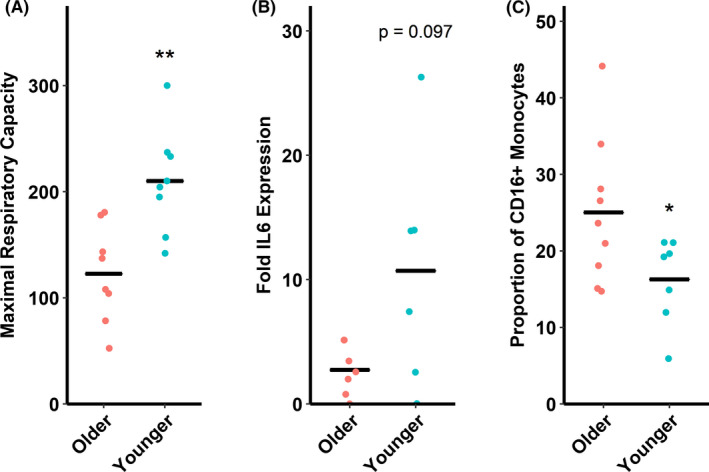Figure 1.

Indications of monocyte dysfunction in older versus younger adults. (A) Older adults (60‐80 y) have reduced mitochondrial respiratory capacity compared to younger adults (18‐35 y). Maximal respiratory capacity is in pmol O2·min−1·(105 monocytes)−1 as measured by a Seahorse XFp analyzer. (B) Older adults have a trend toward reduced IL6 gene expression following lipopolysaccharide stimulation (by 2−ΔΔCt method against B2M) compared to younger adults. (C) Older adults have increased circulating proportions of CD16+ monocytes (as percent total circulating monocytes) compared to younger adults. This subpopulation encompasses the sum total of proportions of intermediate and non‐classical monocytes. *P ≤ 0.05 compared to older adults. **P < 0.01 compared to older adults. n = 6‐9/group depending on assay
